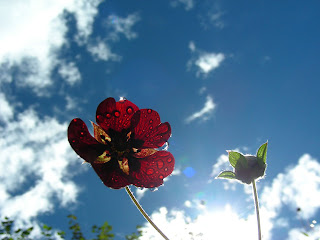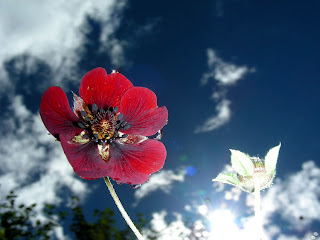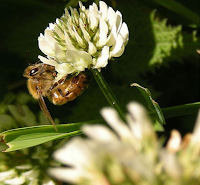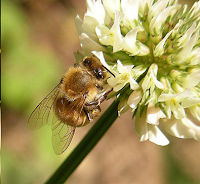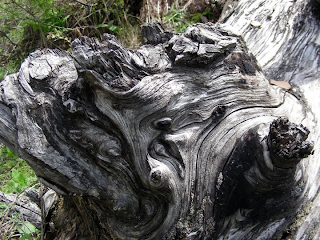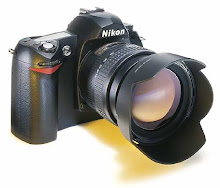How to take good quality Macro photographs
Hello friends, I am back on the photography techniques. As I have mentioned in my last post we shall now begin discussing about the different types or techniques one can use to capture eye catching photographs.
As we see variety of things like flowers, insects, mountains, buildings, people etc. around us, known as 'Objects' in photography, in various surrounding, situations or environment which is identified in terms of 'Frame' in photography. The framing is what I believe is inherent and only can be improved by practice. So keep on clicking around with different frames in mind and just play around with your camera to identify the best frame you captured by reviewing your photos by self, friends and if possible by a professional photographer.
Alright, enough on the framing for now, let's see what are the different techniques we can use and which are useful for different types of photos. To begin with I shall take my personal favorite, the Macro photography. Remember every photography technique is useful for certain type of photos. So it goes true with Macro photography as well. Macro photography is useful to capture tiny details about smaller objects like flowers, insects, tree leaves and also to frame a small portion of bigger objects e.g. a human eye, texture on an apple etc.
In order to take a good macro picture we need to follow certain rules,
- What to shoot?
- How you want to frame it?
- Check on the light.
- Identify a good angle.
- Put your camera on macro mode.
- Target the frame. Remember the rule of third.
- Try to get as close to your object as possible.
- Zoom in on your object.
- Avoid using flash.
- Review the picture.
- Take multiple pictures and choose best among them all.
Identify the object you want to shoot. What you want to expose, capture or highlight in that object. Be sure about it and concentrate your mind on it. Many a times you need to follow your object (like insect, animal etc. moving objects) in order to get what you want.
How you want to frame it?
Be specific on how you want to capture that object. (Remember the discussion we had on the shooting angle?) e.g. Taking a macro picture of a flower be sure whether you want to shoot the petals in detail or the stigma or an insect sitting on the flower.
Check on the light -
Is your object is properly lit up? Poor light conditions lead to addition of colour noise in the picture.
Identify a good angle -
to capture the frame. e.g. If your objective is shooting the patterns in the petal, shooting the flower from lower angle against an open sky when the sunlight is directly falling onto the petal, will lead to great results.
Put your camera on macro mode -
For automatic/semi-automatic cameras it is easy to change the mode and rest all settings will be changed automatically to suit the macro photography but for manual cameras (SLR) one need to check on the shutter speed, aperture, ISO settings manually. Also for the Manual SLR cameras there is enormous range of macro lenses available in market.
Target the frame. Remember the rule of third -
Check the object from your camera's eye piece. If the frame does not match your expectations make required corrections like change angle, position or zoom in-out etc.
Try to get as close to your object as possible -
It depends on how much your camera can focus on close objects and also how much the object allows you to get closer ;)
Zoom in on your object -
Zoom to the extent your camera is allowing. The zooming capability depends upon the distance of the camera lens from the object, light conditions and also the background (other objects in the background sometimes may distract camera from the object to shoot) Lock the focus, let the camera to focus and click.
Avoid using flash -
Do not use flash in macro photography as much as possible. In macro photography flash is useless as your object is so close to your camera (as close as 1 feet or even lesser (SLR with macro lenses)) The flash of any camera is useful if the object is at a distance 2 feet and more. In case of macro photography as the camera is closer than this range the flash will not light up the object properly, the flash will light the area somewhere near the object and you will land up with bad shades in the picture. Leading to a big disappointment.
For an instance the above photo has been taken from a very close distance from the bee. The distance being to close the camera's built-in flash cannot light up the object properly but it appears to be coming from right side of the object. This leads to overexposed right top corner and underexposed left corners. The left side of the bee in this case is also not properly visible as it's left legs and body part is under the dark shadow.
But sometimes the flash can be used cleverly to light up underexposed portion of your object. e.g.
In above photo the flower has been shot from below underexposing the face of it due to the Sun on its back.
In this case I used camera flash to light it up properly. This caused me small side effects of loosing the details of the flower bud on the right side due to overexposure, but as its not my main object I absorb the loss against the details I could gain in the main flower.
Review the picture -
Finally review the picture taken and try to improvise by taking another picture from different distance, angle etc.
Take multiple pictures and choose best among them all later-
From practice you will learn it is always a good idea to take a picture from a considerable distance and zooming on your object then in subsequent pictures try to go close to it. Especially when you are shooting for any insect or animal. Usually in the process of getting close; the object will fly away and you will be disappointed for missing a good click.
Apart from above mentioned list there is one important thing you need to have for macro photography which I have learned from personal experience is "PATIENCE" Keep waiting till you get the object in your range. This wait may last from few minutes to hours depending on what is your object and frame.
So next time you are out on a hunt and decide to take some macro shots keep the discussion in mind and you will come home happily smiling with handful of cherishing pictures.






